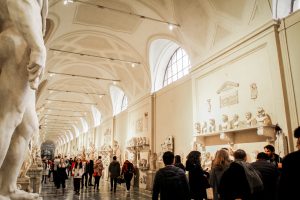
Overview
The follow blog post is the final posting for the Spring 2020 class. This post will discuss two main themes from the course: public history authority, and digital content vs. printed content.
Part I: Public History Authority
Authority relates to who has creative control over an exhibit. After taking this course and going into class discussions, I have come to realize that authority is shared between audience and curator. In creating a public history exhibit, the audience has creative control just as the curators. This audience authority comes from their past experiences. When working with public history, one often uses oral histories to help add layers of evidence. However, this audience participation within the exhibit creation process is a form of authority. Also, another example of audience authority is feedback. Exhibits will often have a visitor feedback survey to take at the end of the visit. This provides the visitor with an opportunity to insert authority.
In the end, I have learned that this shared authority is key in creating a well-designed public history exhibit. Both the audience and the curator have important roles to play, both offer critical content to the exhibition.
Part II: Content Creation
One of the largest learning curves this semester was understanding how to type for a public, digital audience. One of the best pieces of advice that I received was to write in “chunks not paragraphs.” The online, public visitor is not an academic scholar. Writing for the general visitor has to be short and concise prose, often written in small, bit-sized pieces. This is to allow for a wider audience participation, and shorter paragraphs is to help with the flow of the exhibition. Learning how to write for a public audience on a digital platform was one of the most important parts in this class.
Overall
The last theme that I think is worth mentioning is the idea of collective curation. Public history exhibits (specially online exhibits) are to be created in collaboration with other curators and content experts. Public history is not a one person project! However, I believe this is one of the hardest obstacles for historians to overcome. Historians often work in isolation, only revealing their work at the end of the process. Yet, public history requires one to continuously discuss and form communications with teammates. Collaboration is key for public history, something that goes against the historians nature.